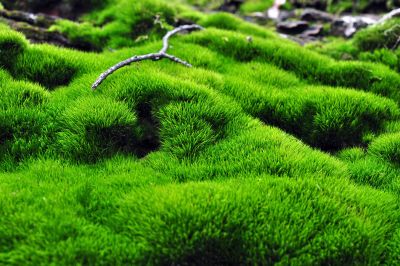Kill Weeds, Not Moss
Moss prefers shady locations. Weeds, on the other hand, need plenty of light to grow. Generally speaking, weeds growing in moss isn’t usually a problem. Pulling the stray weed by hand is easy enough, but neglected areas of the garden can easily become overrun with weeds. Luckily, there are moss-safe products for weed control in moss gardens. Mosses are bryophytes, meaning they don’t have true roots, stems, or leaves. Unlike most plants, moss doesn’t move nutrients and water through a vascular system. Instead, they absorb these elements directly into their plant bodies. This primordial trait makes using standard weed killers safe for removing weeds from moss. Herbicides containing glyphosate can be safely used to kill weeds growing in moss. When applied to the leaves of growing plants, glyphosate kills both grasses and broadleaf plants. It is absorbed through the leaves and travels through a plant’s vascular system killing the leaves, stems, and roots. Since bryophytes don’t have a vascular system, glyphosates kill weeds but not moss. Other systemic broadleaf weeds killers, such as 2,4-D, can be used for controlling weeds in moss. If you’re concerned that using herbicides could discolor or even kill the moss, cover it with newspaper or cardboard. (Be sure to leave the weed stems with new growth leaves exposed.)
Preventative Weed Control in Moss Gardens
Pre-emergence treatments containing corn gluten or trifluralin will prohibit seed germination. These are especially useful for areas where weed seeds blow into moss beds. This type of treatment is not effective for removing weeds from moss but works to prevent new weed seeds from sprouting. Pre-emergence herbicides require reapplication every 4 to 6 weeks during weed germination season. It won’t harm existing moss, but it could possibly inhibit the growth of new moss spores. Additionally, activities that disturb the ground, like planting and digging, will disrupt the effectiveness of these products and they will need to be reapplied. It’s advisable to wear protective clothing and gloves when applying herbicides and pre-emergence products. Always read and follow all manufacturer’s labeled instructions for proper use of the product and disposal information for the empty containers. Note: Any recommendations pertaining to the use of chemicals are for informational purposes only. Specific brand names or commercial products or services do not imply endorsement. Chemical control should only be used as a last resort, as organic approaches are safer and more environmentally friendly.
